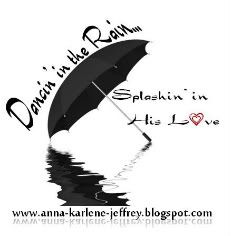Friday Fiction
The beefy hand of the park ranger slid the pass to me and
droned, “Please don’t remove or consume any historical items from the memorial.” My eyebrows puckered; silently I queried the
dusting of powdered sugar near his lower lip.
It had been ten bland years since the prohibition against
all forms of junk food. The military was
pressed into service, called upon to round up junk food from manufacturing
plants, warehouses, store shelves, and even from the private sector. It was transported to a rural area, where confections
and snacks were bulldozed into a misshapen obese mountain. Within months of the junk food ban, the Bible
was also banned. Of these two dangers to
society, only junk food was memorialized with a National Historic Memorial.
In the penumbra of the gastro-monstrous mountain, the
concrete Visitor Center and Museum beckoned.
After the greeting by the sticky museum
door handle, I felt the need to slide my hand down the spinach-green slacks I’d
chosen to wear. Inside, a standard
gray movable sign on the left announced, “Junk
Food National Historic Memorial -- mountain tours begin on the hour.” I checked my watch; I had thirty minutes
to explore the museum before the next tour began.
The adjoining room to my left was labeled “Snacks.” I entered its dimness, allowing my eyes to
focus on the bright displays. The first
told the history of the potato chip, its origin and packaging through the
years. Memories of fun-filled days spent
with Jimmy at the county fair flooded as scents of popcorn and chips were
vented into the room. The adjacent
display used glaring geometric shapes and blaring neon colors with a chilling
reminder of the calorie content and emphasized bodily damage from potato chip
consumption.
Next, my buff non-junk-food-contaminated body hurriedly
perused the snack cake display with its similar history followed by a consumer
warning. Nostalgia smacked my lean
six-pack with longing for those crème-filled delights of bygone days. Other rooms off the main hall were labeled, “Soda Pop,” and “Pastries.” I had my
choice of which junk food rooms to
sample next.
The last room I visited was labeled “Experience the sluggish life of a junk-food junkie.” This room was set up to be an experiential
warning, where the participant could suffer through two minutes in the life of
a junk food addict. This was the room I
secretly and eagerly anticipated. This
National Historic Memorial was the only place in the country where junk food
was legally sold—in limited quantities. Just
before entering, I purchased my artery-clogging, blood-pressure-raising junk food
of choice. There was an overstuffed
couch along the back wall of the lamp-lit room. I plopped onto the overstuffing and set my
feet atop the coffee table that fronted the couch. The opposite wall sported a mounted
television with a football game already in progress. I kicked-off my two minutes when I popped
the soda can top and ripped open the single-serving bag of chips. The
salty crisps and the fizzy liquid were an explosion of enjoyment, reawakening
smothered and forbidden sensations. The
two-minute experiential warning was
pure ambrosia.
As I awaited the mountain tour, suddenly warning whistles
blared. Uniformed personnel swarmed from
every direction like ants looking for the last picnic crumb. The loud speaker announced that a praline
had been stolen from the historic mountain memorial and recent mountain
tourists would have to undergo a search.
Then came a saccharin apology, “We regret that due to the theft, there will
be no more Junk Food Mountain tours today.”
I gave a quick wave to the park ranger as I left the
National Historic Memorial. His double
chin pumped his head in my direction as his mouth remained fixed and his hands
seemed preoccupied with something beyond my vision. The sign at the park exit warned, “We remember; lest we go back.”
I plan to return next year, just to be warned again.
© Beth LaBuff -- September 2012














